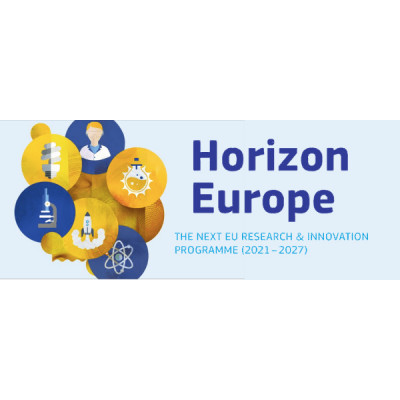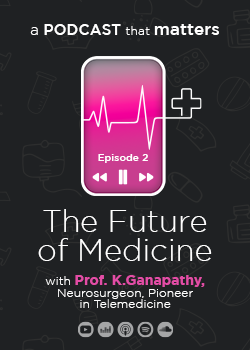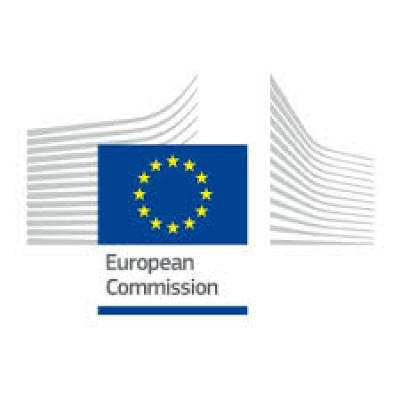
Advanced materials for hydrogen storage tanks
Details
Description
Call updates
Jul 31, 2023 2:25:21 PMC
An overview of the evaluation results for the call HORIZON-JTI-CLEANH2-2023-1 is now available. More information can be found in this document: Flash call info
https://www.clean-hydrogen.europa.eu/system/files/2023-07/CALL%20UPDATE%20-%20flash%20info%20-%20Call%20HORIZON-JTI-CLEANH2-2023-1_0.pdf
Feb 1, 2023 12:18:11 PM
The submission session is now available for: HORIZON-JTI-CLEANH2-2023-07-01(HORIZON-JU-RIA)
Jan 31, 2023 3:02:52 PM
In section "Topic conditions and documents", the documents Application form - Part B (HE CleanH2 RIA, IA) and Application form - Part B (HE CleanH2 CSA) have been updated.
Advanced materials for hydrogen storage tanks
TOPIC ID: HORIZON-JTI-CLEANH2-2023-07-01
Programme: Horizon Europe Framework Programme (HORIZON)
Call: HORIZON-JTI-CLEANH2-2023-1 (HORIZON-JTI-CLEANH2-2023-1)
Type of action: HORIZON-JU-RIA HORIZON JU Research and Innovation Actions
Type of MGA: HORIZON Action Grant Budget-Based [HORIZON-AG]
Deadline model: single-stage
Planned opening date: 31 January 2023
Deadline date: 18 April 2023 17:00:00 Brussels time
ExpectedOutcome:
For hydrogen, as well as its derivatives, to be a truly sustainable energy vector and part of a future sustainable energy system, their storage technologies need to be further developed. This topic aims to develop a step change, supporting key elements of the long-term needs of hydrogen storage, notably:
Reduction of whole lifetime costs of hydrogen storage technologies;
Development of environmentally sustainable and circular storage systems;
Ensuring the safety of innovative hydrogen storage technologies.
Some projections expect that hydrogen will account for 24% of Europe’s energy needs by 2050[1]. This requires storage at multiple stages and transportation between the production and end-use phases, thus there is going to be a need for a significant storage solutions. For example, considering mobility needs, there will be required many storage tanks by 2050[2] with a lifetime from 3 years to 15 years depending on the application. Additionally, there will be a significant number of storage tanks to support the mobility aspect, i.e. in refuelling stations. The outcomes of this topic will consider the new generation of materials required for the storage of all forms of hydrogen and how they can be used in a circular economy business approach.
Project results are expected to contribute to all of the following expected outcomes:
Development of multifunctional materials, focusing on reducing the whole life cost of hydrogen storage solutions by 50%. Materials as hydrogen carriers are not in scope of this topic;
Identification and development of sustainable materials enabling a circular design as per the Circular Economy System Diagram[3];
Development of standardised inspection and repair methods that can be used to increase the lifetime of hydrogen storage solutions;
Development of smart solutions that allow for cross-application uses of hydrogen storage, specifically for end of first life scenarios, thus reducing the total number of storage tanks produced;
Strengthening the EU value chain without an effect on the sustainability aspects of the storage solution, in line with the objectives of the RePower EU action plan[4];
Improvement of safety aspects relative to hydrogen storage in tanks, considering industrial needs, and thus contributing to improving public acceptance of hydrogen technologies;
Increase in knowledge of the wider research community, industry and support to the adoption of hydrogen by the wider society;
This SRC should also provide solutions for technologies for other partnerships within Horizon Europe, including, but not limited to, Clean Aviation, Circular Bio-based Europe, EU Rail and Key Digital Technologies, as well as Clean Hydrogen JU itself.
Project results are expected to contribute to all of the following objectives and KPIs of the Clean Hydrogen JU SRIA:
For aboveground storage of hydrogen there should be an increase in storage size and reduction in capital cost according to the following KPI’s:
Storage size: 20 tonnes in 2030;
Cost reduced: 600 €/kg in 2030.
For road transport of hydrogen there should be an increase in tube trailer payload, reduction in capital cost and increase in operating pressure according to the following KPI’s:
For compressed hydrogen, trailer payload: 1,500 kg in 2030;
For compressed hydrogen, trailer capital cost: 350 €/kg in 2030;
For compressed hydrogen, operating pressure: 700 bar in 2030;
For LH2 trailer payload, trailer payload: 4,000 kg in 2030;
For LH2 trailer payload, trailer capital cost: 100 €/kg in 2030.
For onboard storage of hydrogen in heavy-duty truck applications there should be a reduction in capital cost, an increase of gravimetric capacity and increase of conformability according to the following KPI’s:
For compressed hydrogen, storage tank capital cost: 300 €/kg H2 in 2030;
For liquid hydrogen, storage tank capital cost: 245 €/kg H2 in 2030 ;
For compressed hydrogen, increase in gravimetric capacity: 7% in 2030;
For liquid hydrogen, increase in gravimetric capacity: 12% in 2030;
For liquid hydrogen, increase in conformability: 55% in 2030.
For onboard storage of hydrogen for aviation applications there should be an increase in tank gravimetric efficiency, where the gravimetric efficiency of a storage tank is the mass of stored hydrogen divided by the mass of the system (included mass of hydrogen), according to the following KPI:
Tank gravimetric efficiency: 35% in 2030.
Scope:
Storage of hydrogen is specifically challenging, depending on its physical state; in gas form hydrogen is difficult to contain, whilst in liquid form it requires extremely low temperatures. The current hydrogen storage solutions utilise a number of high-performance materials, such as high-performance steels, aluminium or composites (carbon fibres specifically), which have been developed over many years with projects such as CHATT[5] and more recent THOR[6], which considers both the performance and the recyclability. As these materials substantially affect the cost and mass at system level, it is critical that lower cost and lighter storage solutions are developed for hydrogen technologies to be adopted widely[7]. Ongoing EU funded project SH2APED[8]focuses on cost reduction and safety. However, as materials used in the hydrogen storage solution can be a leading cause behind the environmental impacts,[9] sustainable and circular material solutions are critical for the storage tank materials. There are currently very few materials for storage of hydrogen that could be considered as a sustainable material or developed within the circular economy model.
This topic focuses on developing advanced materials to reduce whole life costs and produce lighter solutions for hydrogen storage, whilst developing sustainable circular economy-based components and considering the environmental and social impacts. The hydrogen storage emphasised under this topic covers the form of gas, liquid or cryo-compressed states supporting high-pressure tanks even up to 1,000 bar.
In addition, the EU security of materials supply/independency should be investigated and addressed. All materials used should comply with the actions laid out in the REPowerEU Plan[10] and other EU initiatives relevant to this topic.
Of particular interest are advanced and next-generation materials with multi-functionality enabling better integration of the storage into the system or having a notable effect on the total system operation (for example, materials which selfheal, thus reducing maintenance requirements). Moreover, materials which allow for storage solutions that occupy more of the useable space are within the scope of this topic. In order to use the benefits of these materials, in their manufacturing, joining often represents a mandatory task to use the benefits of the developed materials. Such joining processes should not compromise the initial material properties or functions. Development of the joining process should consider how this could enable improvement in environmental sustainability and a reduction in whole life costs.
In addition to materials development, the scope includes the development of methods for the inspection and repair of hydrogen storage systems, starting from initial manufacturing to end of life with a specific concern for where access can be challenging. This should enable and support end of life scenarios and life extension of the hydrogen storage solutions.
Proposals should include the materials development for tank hull (e.g. the bottom portion of the tank) focusing on storage solutions for the following uses:
Fixed / static storage
Mobility applications:
Road transportation
Marine transportation
Aerospace transportation
Rail transportation
Hydrogen storage solutions for space applications and large underground storage as well as development of hydrogen carrier materials / solid state storage are out of the scope of this topic.
Building across the applications listed, digitalisation of circular economy (open access) system / platforms should be considered as well as contributions to new standards and regulations within scope of this topic.
In order to validate the project, one for each type of the following demonstrators tested in lab environment (TRL 4) () with the associated full-sized documentation should be included (the testing conditions should be in line with the objectives and KPIs of the Clean Hydrogen JU SRIA stated above):
Above ground storage demonstrator:
Operating pressure test;
Ambient temperatures;
Hydrogen gas form;
1 tank containing more than 300 kg of hydrogen.
Transport of hydrogen demonstrator:
Operating pressure test;
Ambient temperatures;
Liquid hydrogen or gas form;
1 tank containing more than 150 kg of hydrogen.
Heavy-duty road transport demonstrator:
Operating pressure test;
Ambient temperatures;
Liquid hydrogen or gas form;
1 tank containing more than 40 kg of hydrogen.
Aviation demonstrator:
Operating pressure test;
Ambient temperatures;
Liquid hydrogen;
One tank containing more than 100 kg of hydrogen (Boil-off < 2% in 24 hours).
All objectives mentioned above should be complemented, but not limited to the following additional activities:
Whole life cost model;
Environmental sustainability / circular economy review;
TRL assessment and development plan for increasing from TRL 4 to 8;
Relevant material testing data to prove demonstrators have the potential to meet full application specification. The following should be considered where relevant:
Mechanical;
Permeability;
Climate appropriate for application e.g. hot and cold testing;
Corrosion resistance;
Resistance to fire;
Supply chain plan, linked to the REPowerEU action plan[10], detailing the potential of a sustainable / circular supply chain.
Proposals are expected to explore synergies with the projects supported under HORIZON-CL4-2021-RESILIENCE-01-17 Advanced materials for hydrogen storage’[12] as well as with other relevant projects supported by the Clean Hydrogen JU on hydrogen storage.
Consortia should gather comprehensive expertise and experience from the EU research community to ensure broad impact by addressing the items above. Partners should have proven expertise and the required means of materials development, characterisation, and testing. Industrial guidance is considered essential, for instance through an industrial advisory board.
Proposals should explain how the results will be exploited, and how key advances from the activities will be communicated to the broader community to ensure rapid uptake of developments by end-users. To facilitate this communication, dissemination should have high priority and most deliverables should be public. A public annual progress report should include, as necessary, recommendations for future activities and possible organisation of workshops.
An extended similar annual report with detailed technical progress results should be provided internally to the JU for fast tracking activities and further programming. The report should include key innovations against TRL, risks, opportunities, challenges and proposed next steps for the development of next generation of technologies and products.
Activities are expected to start at TRL 2 and achieve TRL 4 by the end of the project - see General Annex B.
At least one partner in the consortium must be a member of either Hydrogen Europe or Hydrogen Europe Research.
The maximum Clean Hydrogen JU contribution that may be requested is EUR 10.00 million – proposals requesting Clean Hydrogen JU contributions above this amount will not be evaluated.
The conditions related to this topic are provided in the chapter 2.2.3.2 of the Clean Hydrogen JU 2023 Annual Work Plan and in the General Annexes to the Horizon Europe Work Programme 2023–2024 which apply mutatis mutandis.
Specific Topic Conditions:
Activities are expected to start at TRL 2 and achieve TRL 4 by the end of the project - see General Annex B.
[1]Hydrogen Roadmap Europe – A sustainable pathway for the European energy transition, Ful Cells and Hydrogen Joint Undertaking, 2019
[2]Assuming a large uptake of hydrogen in road (LDV, HDV), aviation, waterborne and maritime transport applications, replacing the existing European fleet of thermal vehicles in Europe.
[3]Ellen MacArthur Foundation - Circular economy systems diagram 2019
[4]https://ec.europa.eu/info/strategy/priorities-2019-2024/european-green-deal/repowereu-affordable-secure-and-sustainable-energy-europe_en
[5]https://cordis.europa.eu/project/id/285117
[6]https://cordis.europa.eu/project/id/826262
[7]Hydrogen Roadmap Europe – A sustainable pathway for the European energy transition, Ful Cells and Hydrogen Joint Undertaking, 2019
[8]https://cordis.europa.eu/project/id/101007182
[9]ELSA WEISZFLOG & MANAN ABBAS ‘Life cycle assessment of hydrogen storage systems for trucks - An assessment of environmental impacts and recycling flows of carbon fibers’ 2022
[10]REPowerEU Plan 2022
[11]REPowerEU Plan 2022
[12]https://ec.europa.eu/info/funding-tenders/opportunities/portal/screen/opportunities/topic-details/horizon-cl4-2021-resilience-01-17



